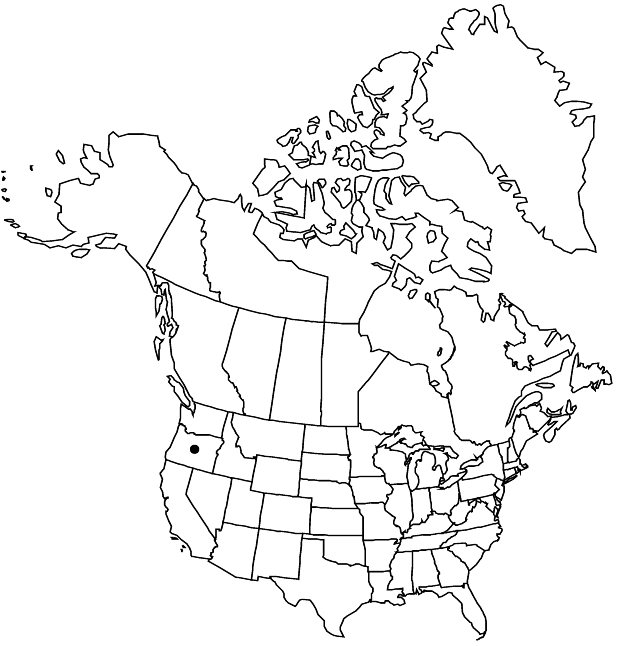Kalmiopsis fragrans
J. Bot. Res. Inst. Texas 1: 10, figs. 1, 2A,C, 3A, 4A,B. 2007 ,.
Shrubs, erect, larger plants frequently trailing, loose, to 12(–30) dm. Twigs reddish to purplish, becoming gray to dark gray, puberulent and sparsely sessile-glandular, becoming glabrate. Leaves sweetly aromatic; petiole 1–4 mm, sparsely puberulent, glandular; blade rich, deep green abaxially, pale green adaxially, elliptic to elliptic-oblong, (5–)8–30(–45) × 4–10 mm, base ± cuneate, margins entire, plane, apex obtuse, apiculate, surfaces glabrous or sparsely sessile dotted-glandular abaxially, moderately covered with sessile crystalline-punctate glands adaxially. Inflorescences erect, (2–)4–8(–12)-flowered; bracts leaflike. Pedicels 0.5–2.5(–3.3) cm, hairy, glandular. Flowers: calyx lobes reddish pink to purple, ovate, 3–5 mm, margins ± glandular-ciliate; corolla pale reddish purple to deep pink, 16–28(–33) mm diam., petal ridges connected within corolla lobes, connate ca. 1/3 their lengths, abaxial surface ± puberulent and glandular toward apex (throat mostly glabrous); filaments 7–16 mm, with yellowish cilia densely tufted basally; anthers purple, oblong, 0.7–1.8 mm; style dimorphic, 11–15 mm (long form), 5–8 mm (short form); ovary puberulent, dotted-glandular. Seeds 0.3–0.7 mm.
Phenology: Flowering early–late spring.
Habitat: Tuffaceous outcrops, within shaded, mesic, coniferous forests, open ridges, bare rock or shallow soil at bases of cliffs or boulders
Elevation: 400-1300 m
Discussion
Of conservation concern.
In cultivation, Kalmiopsis fragrans has sometimes been sold or labeled as the “LePiniec” form of Kalmiopsis. In the wild, it has a narrower geographic range (restricted to Douglas County in the southern Cascade Mountains of Oregon) and is significantly rarer than K. leachiana.
Selected References
None.
